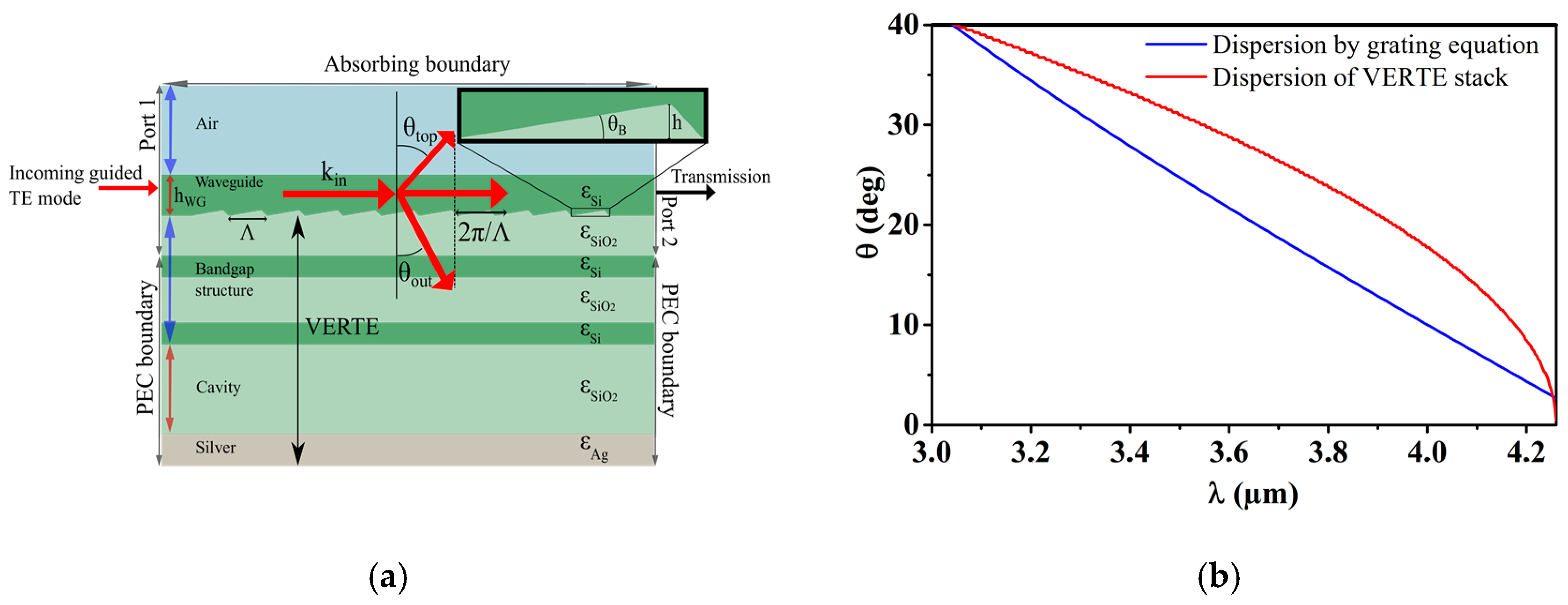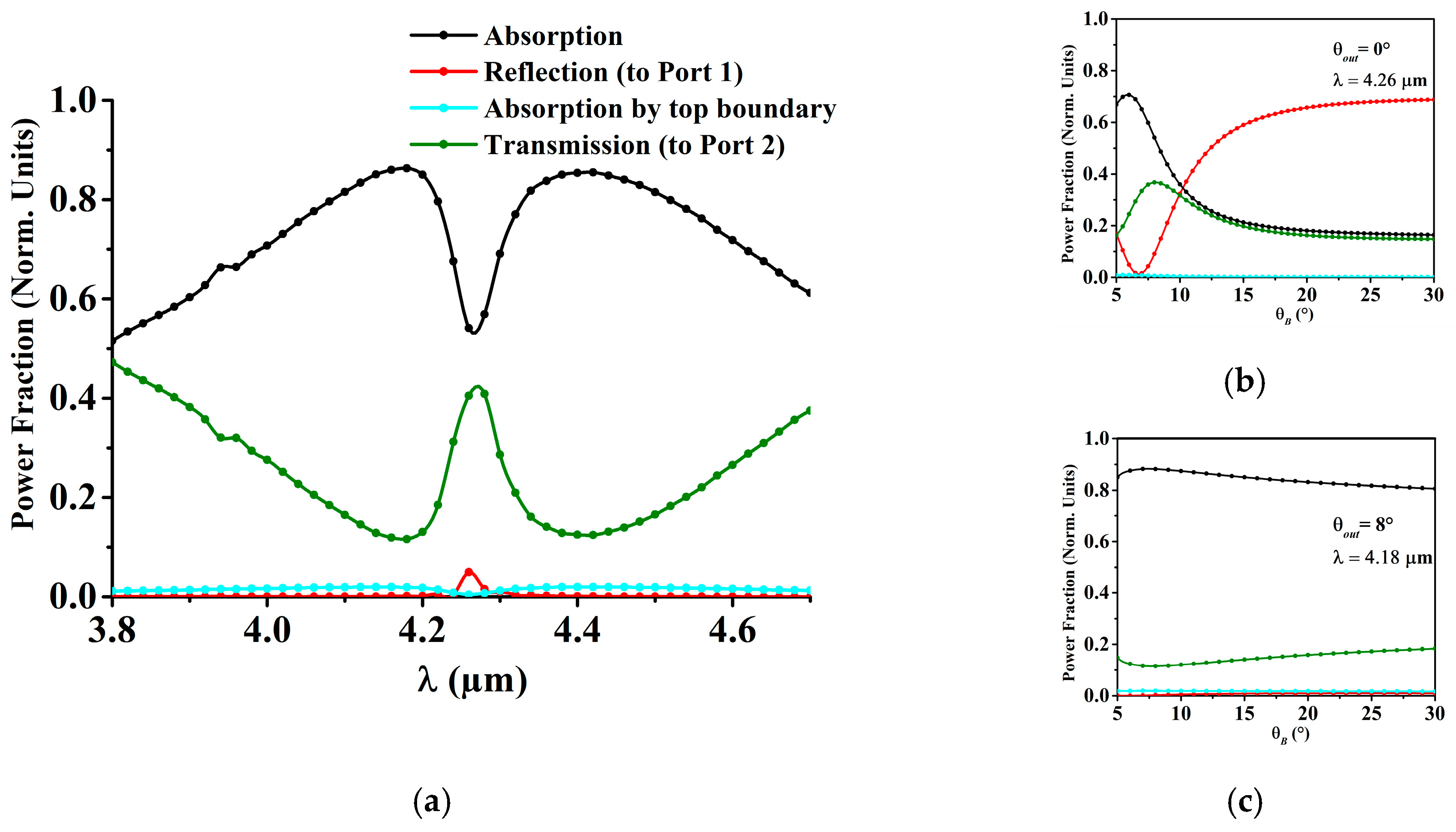Efficient Vertical-Cavity Mid-IR Thermal Radiation to Silicon-Slab Waveguide Coupling Using a Shallow Blazed Grating †
Abstract
:1. Introduction
2. Simulation Configurations
2.1. 1D Frequency Domain Matrix-Transfer Method
2.2. 2D Frequency Domain FEM Geometry
2.3. Coupling Efficiency
3. Results and Discussion
3.1. Transfer Matrix Method 1D Simulations
3.2. FEM 2D Simulations
Acknowledgments
Conflicts of Interest
References
- Celanovic, I.; Perreault, D.; Kassakian, J. Resonant-cavity enhanced thermal emission. Phys. Rev. B 2005, 72, 2–7. [Google Scholar] [CrossRef]
- Pühringer, G.; Jakoby, B. Modeling of a Highly Optimizable Vertical-Cavity Thermal Emitter for the Mid-Infrared. Procedia Eng. 2016, 168, 1214–1218. [Google Scholar] [CrossRef]
- Granier, C.H.; Afzal, F.O.; Min, C.; Dowling, J.P.; Veronis, G. Optimized aperiodic highly directional narrowband infrared emitters. J. Opt. Soc. Am. B 2014, 31, 1316–1321. [Google Scholar] [CrossRef]
- Covey, J.; Chen, R.T. Efficient perfectly vertical fiber-to-chip grating coupler for silicon horizontal multiple slot waveguides. Opt. Express 2013, 21, 10886–10896. [Google Scholar] [CrossRef] [PubMed]




Publisher’s Note: MDPI stays neutral with regard to jurisdictional claims in published maps and institutional affiliations. |
© 2017 by the authors. Licensee MDPI, Basel, Switzerland. This article is an open access article distributed under the terms and conditions of the Creative Commons Attribution (CC BY) license (https://creativecommons.org/licenses/by/4.0/).
Share and Cite
Pühringer, G.; Jakoby, B. Efficient Vertical-Cavity Mid-IR Thermal Radiation to Silicon-Slab Waveguide Coupling Using a Shallow Blazed Grating. Proceedings 2017, 1, 286. https://doi.org/10.3390/proceedings1040286
Pühringer G, Jakoby B. Efficient Vertical-Cavity Mid-IR Thermal Radiation to Silicon-Slab Waveguide Coupling Using a Shallow Blazed Grating. Proceedings. 2017; 1(4):286. https://doi.org/10.3390/proceedings1040286
Chicago/Turabian StylePühringer, Gerald, and Bernhard Jakoby. 2017. "Efficient Vertical-Cavity Mid-IR Thermal Radiation to Silicon-Slab Waveguide Coupling Using a Shallow Blazed Grating" Proceedings 1, no. 4: 286. https://doi.org/10.3390/proceedings1040286




